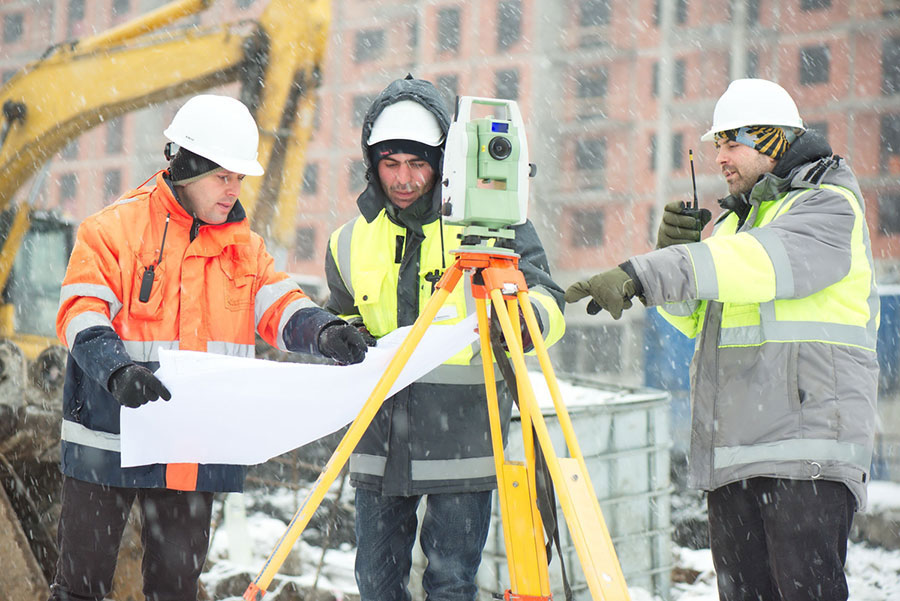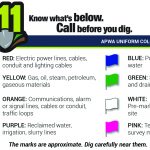
Winter Hazards and Construction Site Safety
Construction projects don’t take a break in the winter so it’s important to think about the winter hazards, and the corresponding safety precautions, that need to be taken due to cold weather. Cold temperatures, wet weather, and frigid winds can not only affect jobsite conditions, but they can also take a drastic toll on the human body.
Going too fast in slippery conditions can be more problematic than it’s worth. Work on a construction site can’t be carried out in the same way as drier months and realistic expectations should be set in terms of timescales and production.
During winter, a construction site will require season-specific countermeasures and risk assessments to ensure that the site remains safe and productive.
Here are some key winter season safety considerations:
Site Awareness Results in Site Safety
It’s no surprise that winter weather increases the risk of jobsite falls due to ice and wet, slippery areas. Surfaces that appear completely harmless in the warmer months can become extremely treacherous in the winter.
Take time throughout the day, every day, to walk through the jobsite and look for hazards created by snow and ice. Pay particular attention to walkways, work platforms, scaffolds, stairways, and ladders.
Shovel, salt and/or sand icy areas to improve traction for workers. Also, make sure that icy surfaces that can’t be cleared are clearly marked to inform workers to take caution. Workers should wear waterproof boots with non-slip soles.
Ice is another danger. Carefully remove icicles around the jobsite, especially when temperatures begin to warm. If this isn’t possible, rope off the area under the icicles until they are no longer a hazard. When removing snow, don’t allow piles to get too high and block the view of workers in the area.
It’s important to emphasize that hard hats should be worn at all times to protect against falling objects like icicles and slips and falls on ice.
Without surface treatment or restriction/awareness of these areas, workers can slip and/or fall. According to OSHA(https://www.osha.gov/stopfalls/), falls are one of the most deadly and costly accidents on construction jobsites. Falls on the same level are commonly overlooked, but in 2019 they resulted in more than 150,000 injuries resulting in days away from work. The median number of days away from work for these injuries was 10. Slips and falls are costly injuries that can be prevented.
Be Aware of Portable Heating Equipment
In the winter, portable heaters are sometimes necessary, however they can be hazardous if not used appropriately. There are a lot of flammable materials and equipment around a construction site. Fires caused by improperly used heaters pose a great risk to the lives of workers and can be devastating financially to a construction project.
Portable heaters should be inspected and repaired prior to the winter season to make sure they are in good working order. Heaters should be placed on a sturdy, fire-resistant surface and make sure hoses are protected or covered from damage and excessive heat.
Proper ventilation needs to be maintained, allowing fumes to escape. Further, combustible materials should be kept 10-15 feet away from heaters. Propane and other flammable gas cylinders must be stored upright and chained.
Suitable fire protection and equipment should always be available on construction sites, and fire safety training should be maintained.
Dress for Safety – Proper Clothing is Important
Wearing the right protective clothing is important in any season, but winter presents special challenges. Because of wet weather and freezing temperatures, the health condition of workers becomes more important. Conditions like hypothermia, where rapid heat loss or the reduction of body temperature over time can lead to serious illness and downtime, and frostbite of extremities, can set in quickly if safety precautions are not taken.
In addition to hypothermia and frostbite, conditions like cold stress and loss of dexterity and alertness can impair workers’ ability to function both physically and mentally.
Wet clothing can escalate the onset of these medical conditions. It’s important to dress in layers, change to dry clothing when feasible, and choose moisture-wicking clothing, dress in layers and choose the proper gloves or mittens for the specific job. Weather-proof outerwear is highly recommended as it provides protection from the elements.
Also, it’s important to stay hydrated. Drinking warm liquids throughout the day is very important. Just because the weather is cold is does not mean that the body is not losing liquids. Warm liquids do double duty in keeping hydrated, while also keeping warm.
Compliance Consultants, Inc. is here to provide you with helpful information to keep your jobsite safe and compliant. Please contact us at (610) 237-7100 or go to https://ccicomply.com/.



